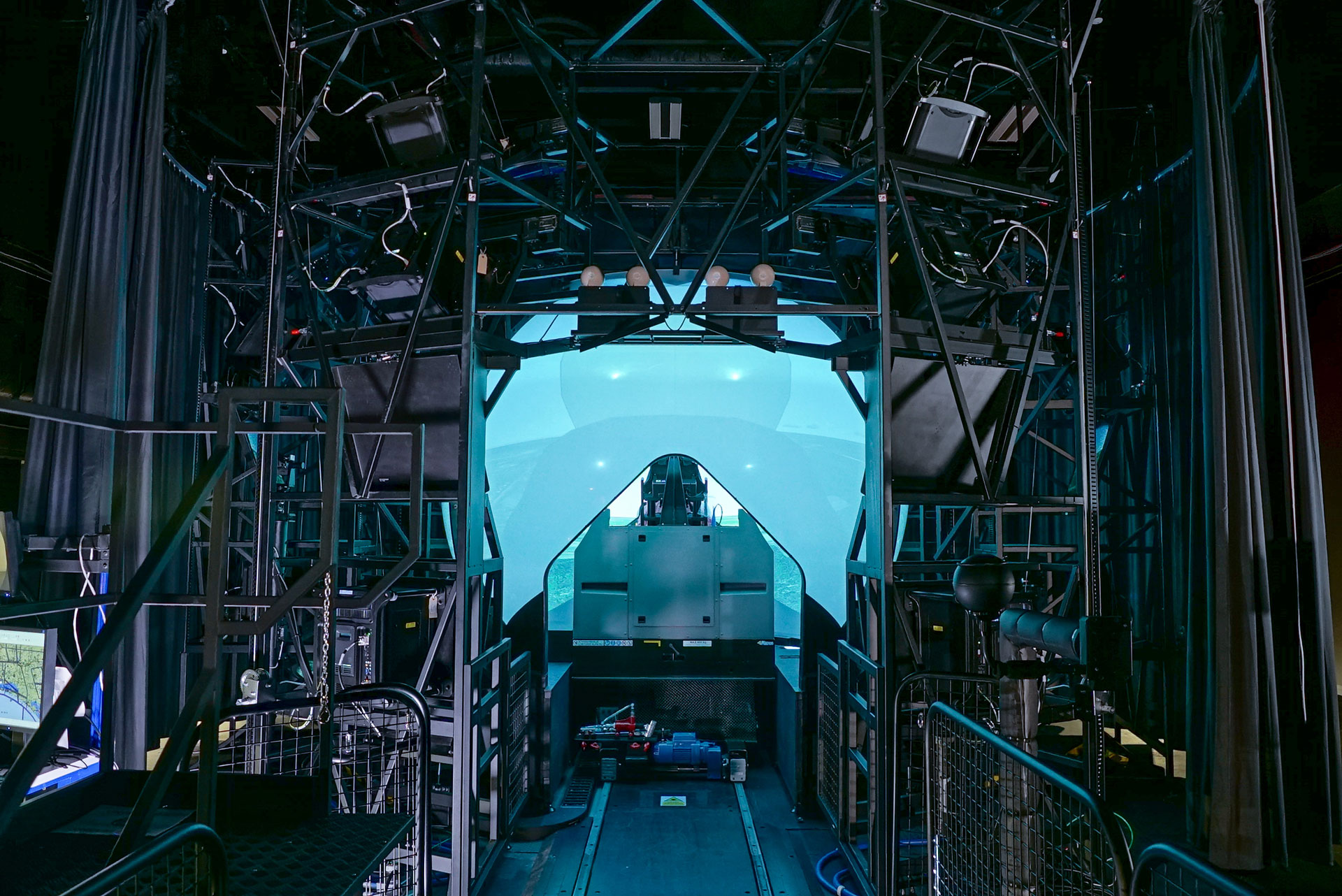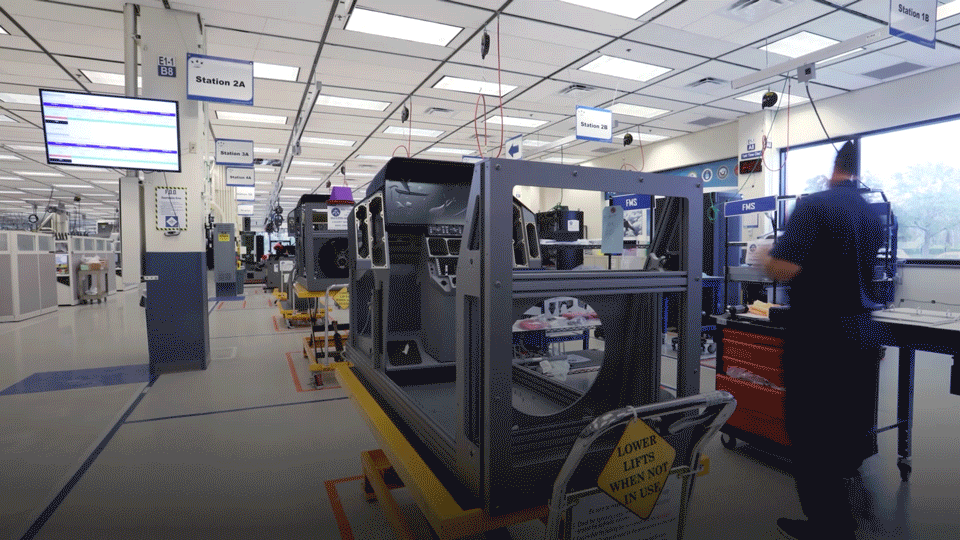News
10 Ways the F-35 Simulator is Changing Pilot Training
April 15, 2021
1. All services, all variants, one simulator.
Whether you’re a pilot commanding air space in the F-35A, operating from an austere base near a combat zone in an F-35B, or onboard an aircraft carrier in the F-35C – we’ve got you covered. Flexibility is key to the design of the F-35 Full Mission Simulator (FMS). It’s built into every element, allowing the system to accommodate all three aircraft variants and all U.S. and international services.
2. Distributed Mission Training (DMT) connects pilots for the high-end fight.
Much like online multi-player gaming, which allows users to play and connect despite physical distance, DMT allows pilots to train together in a shared virtual environment all in real-time. These large force exercises use multiple aircraft platforms to prepare for joint, all domain operations. The U.S. Air Force currently has DMT at Nellis Air Force base and the U.S. Navy has initial capability at NAS Lemoore. The U.S. Marine Corps at Miramar expects to get the capability in 2021.
3. Pilots can fly 45-55% of initial training flights in the FMS.
As a single-seat aircraft, the F-35 requires pilots to master flight competencies before they ever leave the ground. With the FMS, they can safely complete much of their required training virtually, including a broad range of air-to-air, air-to-ground and electronic warfare missions. This one-of-a-kind training syllabus also includes technology-driven academics, flights in the FMS and live flights in the aircraft.
4. Over 1,300 pilots and counting have trained on the FMS.
The first time a pilot flies in the single-seat F-35, they fly alone. Pilots need to penetrate sophisticated enemy air defense and find and disable threats at a moment’s notice. Our high-fidelity FMS enables F-35 pilots to receive the training they need to fly safely and confidently to conduct their missions – first time, every time.

5. NextGen visuals for a 5th Gen fighter.
Think of a snow globe with the pilot in the center of the scene. That’s what it’s like climbing into the FMS. Pilots slide into a cockpit surrounded by a 360-degree dome where they are completely surrounded by the equivalent of 1080p HDTVs, creating the required realism needed in a virtual environment to train pilots effectively.
6. 100 F-35 FMS delivered - tens of thousands of hours flown across 21 sites.
The F-35 recently delivered the 100th FMS for the program at Marine Corps Air Station Miramar in California. Under unforeseen circumstances during the COVID-19 pandemic, our team quickly adapted operations to support the warfighter and their critical missions. To date, there are 21 F-35 training sites around the world and by 2025 - that number will rise to 32.

7. Every F-35 FMS is built in the training capital of the world.
Orlando, Florida is home to our hub for simulation, augmented and virtual reality, live-virtual-constructive capabilities, advanced training devices and full-service training programs. This epicenter provides sustainment services like supply chain and logistics IT solutions, spares and repairs, and automated test and support equipment
8. Replication within simulation.
The FMS uses the actual aircraft software to accurately replicate all sensors and weapons employment. In all the high-fidelity FMSs, F-35 software provides students with the most realistic experience while accelerating the process for software upgrades – all while the F-35 continues to develop and mature. By re-hosting the actual software, pilots are immersed in true-to-life training and mission rehearsal. Think replication within simulation.

9. We’re accelerating production, reducing manufacturing time by 40 percent.
The F-35 FMS is created by hundreds of employees - from engineering and development experts to dedicated assemblers. The FMS is built in a state-of-the-art factory leveraging Digital Transformation as well as key additive manufacturing technologies. Since 2012, manufacturing time has reduced by 40 percent and cost has reduced more than 30 percent.
10. Training saves lives and simulation saves money.
F-35 Training continues to improve product performance and streamline services through partnerships and advancing technologies to bring cost-effective solutions to the warfighter. We’ve improved training device performance with availability and readiness at 95 percent while driving down F-35 sustainment costs with a target of 20 percent reduction over the next five years.

